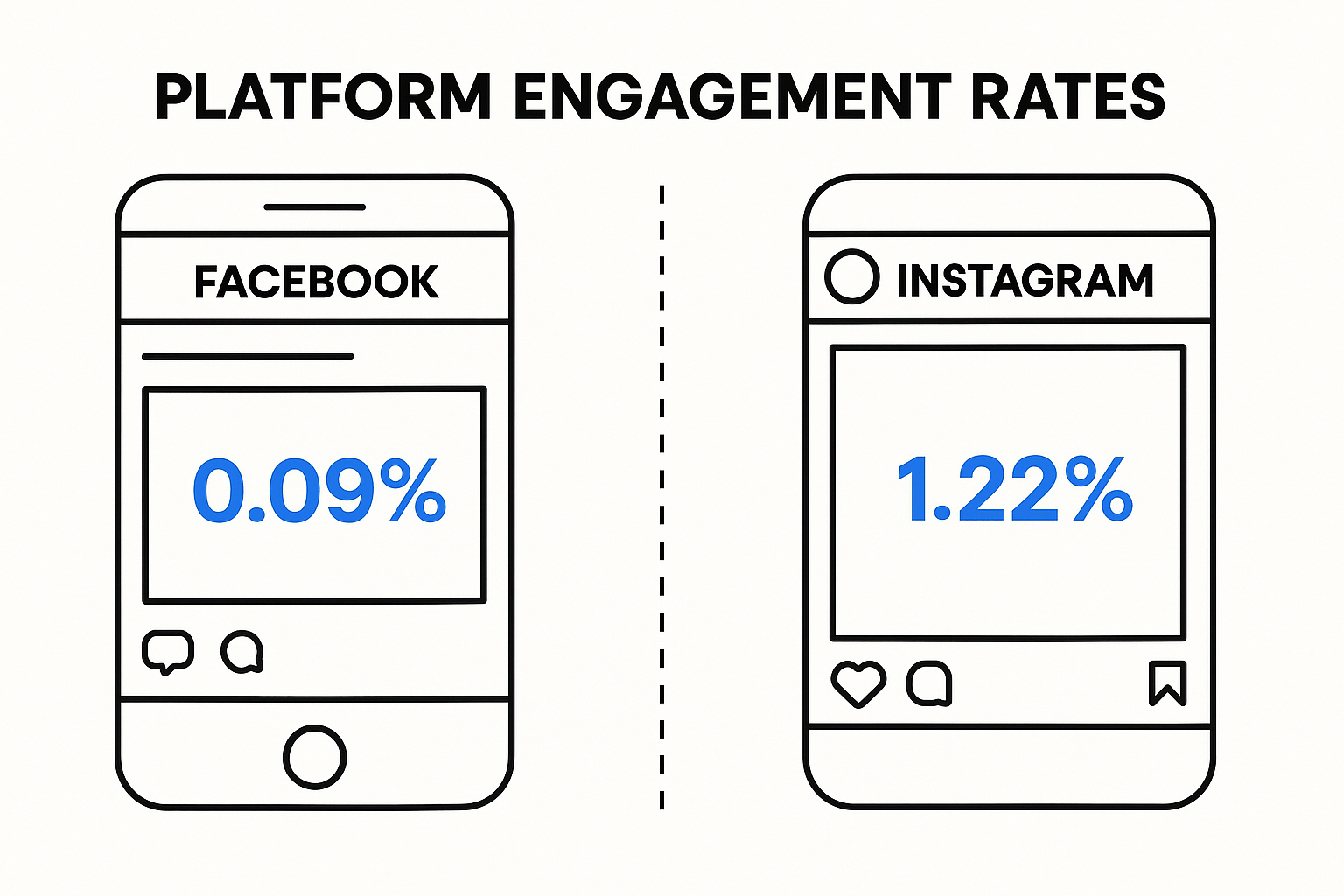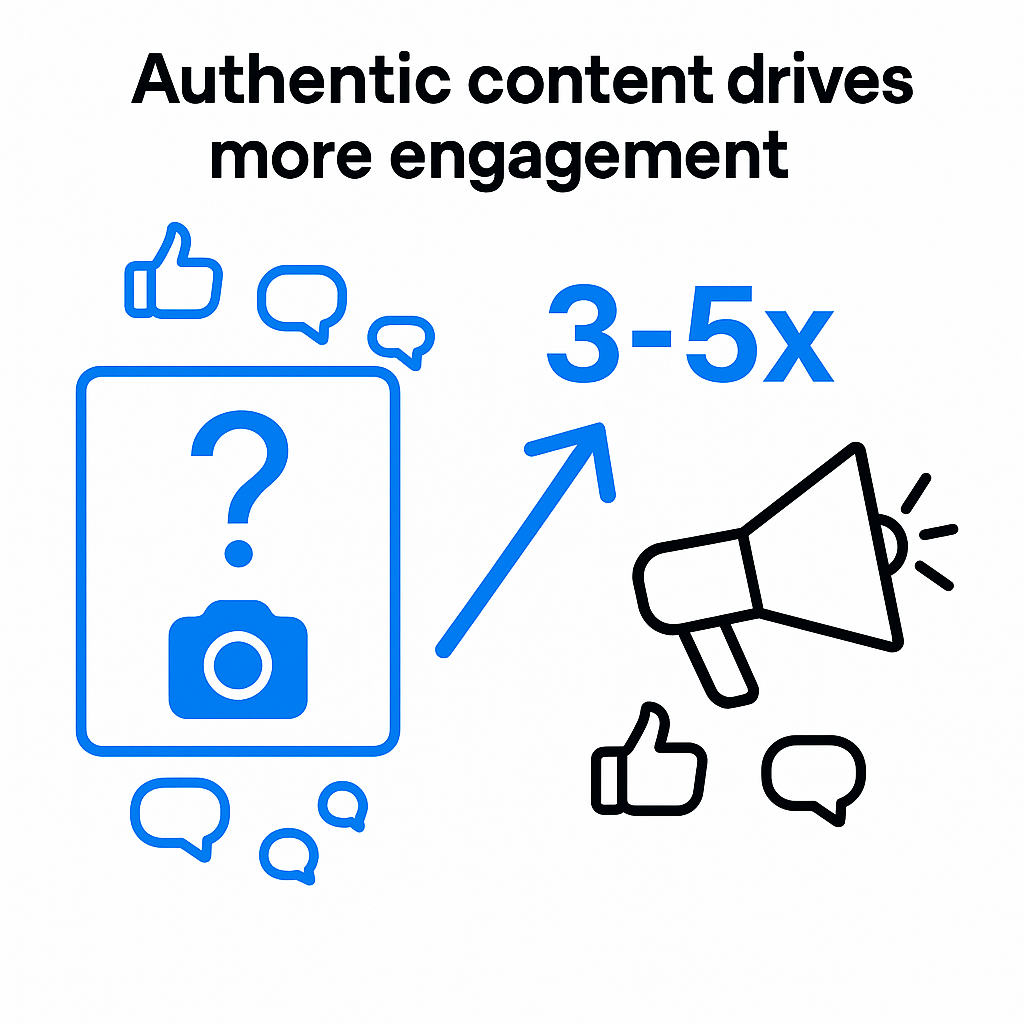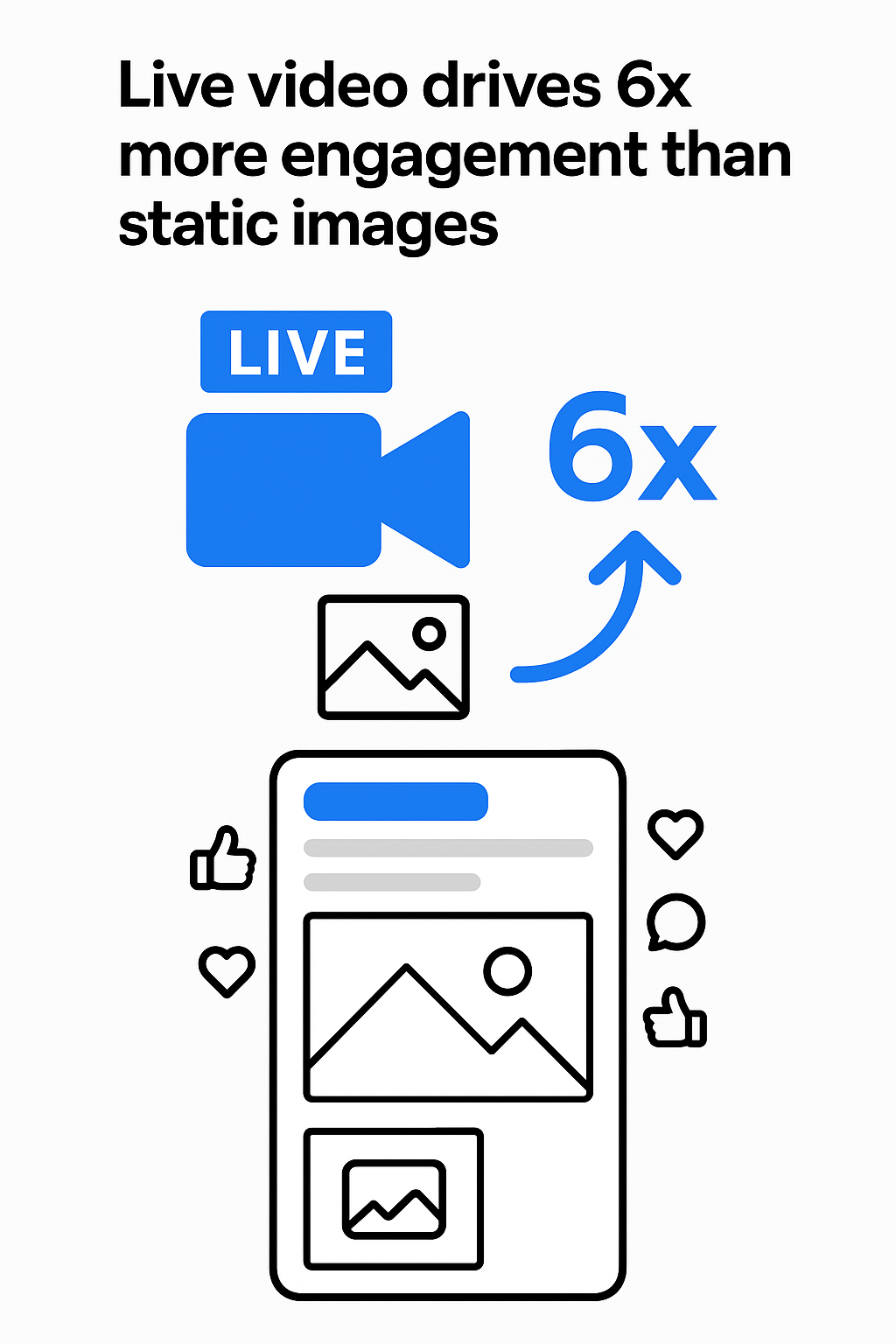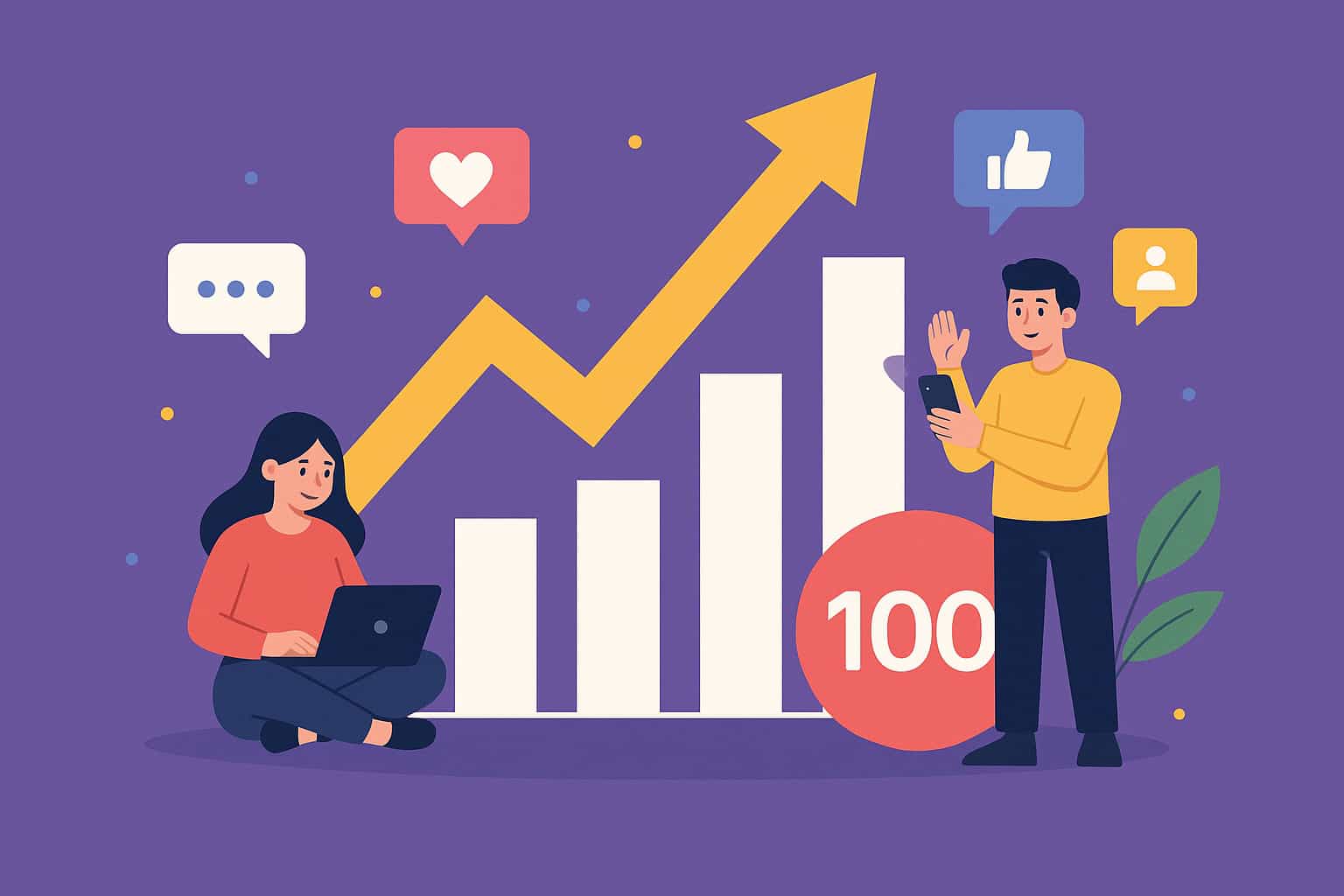Boost Your Social Media Engagement: Proven Strategies
We get it – you’re posting content daily, but the likes, comments, and shares just aren’t rolling in like you’d hoped. You’re not alone in this struggle. With engagement rates plummeting across platforms as algorithms shift focus, many marketers are scratching their heads wondering what’s gone wrong. The good news? There are tried-and-tested strategies that actually work when you know what buttons to push.
This article breaks down exactly how successful brands and marketers are driving real engagement – not vanity metrics, but actual conversations, shares, and interactions that matter. We’ll walk you through platform-specific tactics, content formats that spark audiences to act, optimal timing strategies, and the crucial metrics you should track to measure what’s actually working.
Understanding Social Media Engagement Metrics That Actually Matter
Before diving into tactics, you need to know what success looks like. Engagement rate is calculated by dividing total engagements (likes, comments, shares) by total reach and then multiplying by 100 (Source: Number Analytics). This gives you a clear picture of how your content resonates with your audience.
But here’s where it gets interesting – different platforms have different engagement standards. Facebook posts typically see 0.09% engagement rates, while Instagram averages around 1.22%. Knowing these benchmarks helps set realistic expectations and identify when you’re actually performing above average.

| Platform | Average Engagement Rate | Primary Engagement Types | Best Content Formats |
|---|---|---|---|
| 0.09% | Likes, Comments, Shares | Video, Images, Live streams | |
| 1.22% | Likes, Comments, Story interactions | Stories, Reels, Carousel posts | |
| Twitter/X | 0.045% | Retweets, Replies, Likes | Text posts, Threads, Polls |
| 0.54% | Likes, Comments, Shares | Professional insights, Native video |
Tracking follower growth rate alongside engagement gives you the complete picture (Source: Agency Analytics). You want both metrics moving upward – engagement tells you content quality while growth indicates reach expansion.
Platform-Specific Engagement Strategies
Each platform has its own personality and engagement patterns. What works brilliantly on TikTok might flop spectacularly on LinkedIn. Smart marketers tailor their approach to match each platform’s unique culture and algorithm preferences.
Facebook Engagement Tactics
Facebook Groups remain goldmines for engagement when organic reach continues declining. Join relevant groups where your target audience hangs out, then contribute valuable insights before ever promoting your content. The key is building relationships first, selling second.
Facebook’s algorithm heavily favors content that sparks meaningful conversations. Posts asking genuine questions or sharing behind-the-scenes content typically outperform promotional material by 3-5x. Video content, especially live streams, receives priority in the news feed and generates 6x more engagement than static posts.


Instagram’s Visual Engagement Engine
Instagram Stories and Reels are your engagement superpowers right now. The platform pushes these formats aggressively, often showing them to users who don’t even follow you. Create behind-the-scenes Stories with polls, questions, and interactive stickers – these features signal high engagement to the algorithm.
Carousel posts (multiple images in one post) consistently outperform single images because users swipe through them, creating multiple interaction points. Use this format for tutorials, before-and-after sequences, or product showcases.
Twitter/X Real-Time Conversations
Twitter thrives on real-time engagement and trending conversations. Jumping into relevant hashtag discussions or starting Twitter chats around your expertise builds engaged communities. The key is timing – engaging with trending topics while they’re hot, not after the conversation has moved on.
Twitter threads work exceptionally well for complex topics. Break your insights into digestible tweets, each adding value while building toward a conclusion. This format encourages users to engage with multiple tweets, amplifying your visibility.
LinkedIn Professional Networking
LinkedIn rewards professional insights and industry commentary over promotional content. Share your take on industry trends, lessons from failures, or behind-the-scenes business insights. Native video performs particularly well – LinkedIn prioritizes it heavily in feed algorithms.
| Content Type | Best Platform | Optimal Length | Engagement Boost |
|---|---|---|---|
| Live Video | Facebook/Instagram | 15-30 minutes | 6x higher engagement |
| Story Polls | Instagram/Facebook | 15 seconds | 2-4x interaction rate |
| Twitter Threads | Twitter/X | 5-10 tweets | 3x retweet rate |
| Carousel Posts | Instagram/LinkedIn | 3-5 slides | 1.4x reach boost |
Content Creation Best Practices for Maximum Engagement
Creating content that actually engages people isn’t about following generic templates – it’s about understanding what makes your audience tick. The most engaging content solves problems, entertains genuinely, or provides insights people can’t find elsewhere.
Visual appeal matters enormously across all platforms. High-quality images and videos capture attention in crowded feeds, but “high-quality” doesn’t always mean professionally shot. Authentic, behind-the-scenes content often outperforms polished studio work because it feels more relatable and trustworthy.
User-generated content (UGC) builds engagement through social proof and community building. When customers share photos using your products or discussing your services, reshare this content (with permission). It shows potential customers real people benefiting from what you offer while making existing customers feel valued.
Interactive Content That Drives Action
Interactive content formats consistently drive higher engagement rates than passive content. Polls, quizzes, and question stickers on Stories encourage immediate participation. These elements work because they require active participation rather than passive consumption.

Ask specific questions in your captions that prompt detailed responses. Instead of “What do you think?”, try “Which approach has worked best in your experience: A or B?” Specific questions generate thoughtful responses while generic questions often get ignored.
Create content series that build anticipation and encourage return visits. “Monday Motivation”, “Workshop Wednesday”, or industry-specific weekly features give followers reasons to check back regularly. Consistency in both timing and format helps build engaged communities.
| Interactive Element | Platform Compatibility | Engagement Increase | Best Use Cases |
|---|---|---|---|
| Polls | Instagram, Twitter, Facebook | 50-70% higher | Opinion gathering, A/B testing |
| Q&A Sessions | Instagram Stories, Live video | 200% higher | Expert positioning, community building |
| User Challenges | TikTok, Instagram, Twitter | 300-500% higher | Brand awareness, viral potential |
| Live Streams | All major platforms | 600% higher | Product launches, tutorials |

Optimal Timing and Posting Frequency
Timing isn’t everything, but it definitely matters when you’re competing for attention in constantly updating feeds. The best posting times vary by platform, industry, and audience demographics, but there are general patterns that consistently perform well.
Facebook sees peak engagement between 1-3 PM and 3-4 PM on Tuesday through Thursday. Instagram performs best during lunch hours (11 AM-1 PM) and evening hours (7-9 PM) Monday through Friday. Twitter engagement spikes during commute times and lunch breaks, while LinkedIn thrives during business hours Tuesday through Thursday.
Frequency matters as much as timing. Posting too frequently overwhelms followers and triggers algorithm penalties, while posting too rarely makes you forgettable. The sweet spot for most businesses is once daily on Instagram, 3-5 times weekly on Facebook, 3-7 times weekly on Twitter, and 2-3 times weekly on LinkedIn.
Using Analytics to Find Your Optimal Schedule
Your specific audience might behave differently than general statistics suggest. Use platform analytics to identify when your followers are most active online. Sprout Social and Hootsuite provide detailed timing insights that help optimize your posting schedule.
Test different posting times for 2-4 weeks while keeping content quality consistent. Track engagement rates at different times to identify your audience’s peak activity periods. This data becomes invaluable for scheduling high-priority content when it’s most likely to be seen and shared.
| Platform | Best Days | Peak Hours | Recommended Frequency |
|---|---|---|---|
| Tuesday-Thursday | 1-3 PM, 3-4 PM | 3-5 posts/week | |
| Monday-Friday | 11 AM-1 PM, 7-9 PM | Daily (optimal) | |
| Twitter/X | Tuesday-Thursday | 8-9 AM, 12-1 PM, 5-6 PM | 3-7 tweets/week |
| Tuesday-Thursday | 9-10 AM, 12-1 PM, 5-6 PM | 2-3 posts/week |
Community Management and Interaction Strategies
Building engaged communities requires active participation from brands, not just content broadcasting. Successful social media engagement is definitely a two-way street – you need to engage with your audience as much as you expect them to engage with you.
Respond to comments promptly and thoughtfully. Generic “Thanks!” responses feel automated and impersonal. Instead, acknowledge specific parts of their comments, ask follow-up questions, or share additional insights. This approach turns single comments into ongoing conversations that boost engagement signals.
Proactively engage with your followers’ content, not just their interactions with yours. Like, comment on, and share content from customers, partners, and industry peers. This reciprocal engagement builds relationships that translate into long-term brand advocacy and increased visibility through their networks.
Building Engagement Through Authentic Conversations
Monitor brand mentions and hashtags to find conversations you can join naturally. Use tools like Mention or Brandwatch to track when people discuss your industry, competitors, or related topics (Source: Sprout Social).
Share user-generated content regularly, but always credit the original creators and add your own commentary. This practice shows you’re paying attention to your community while providing fresh content that your audience already finds engaging.
Create exclusive content for your most engaged followers. Behind-the-scenes access, early product previews, or special discount codes reward engagement while encouraging continued participation. These exclusive touches make followers feel valued and increase their likelihood to engage with future content.
Analytics and Performance Tracking
Tracking the right metrics separates successful engagement strategies from shots in the dark. Beyond basic engagement rates, monitor reach, impressions, saves, shares, and click-through rates. Each metric tells part of your content performance story.
Sentiment analysis helps understand how people feel about your brand and content, not just how much they’re interacting with it (Source: Improvado). Tools like Brandwatch and Sprout Social analyze the emotional tone of comments and mentions.
Track engagement rates by content type, posting time, and topic to identify patterns. Video content might perform better than images for your audience, or educational posts might outperform entertainment content. These insights guide future content decisions.
Tools for Comprehensive Engagement Analysis
Use platform-native analytics alongside third-party tools for complete performance pictures. Facebook Insights, Instagram Insights, and Twitter Analytics provide detailed engagement breakdowns, while tools like Buffer and Later offer cross-platform comparison capabilities.
Set up automated reports to track engagement trends over time. Monthly or quarterly reviews help identify seasonal patterns, content fatigue, and emerging engagement opportunities. This long-term view prevents reactive decision-making based on short-term fluctuations.
| Metric | What It Measures | Why It Matters | Improvement Strategy |
|---|---|---|---|
| Engagement Rate | Interactions vs. reach | Content relevance | A/B test content formats |
| Share Rate | Content worth spreading | Amplification potential | Create more shareable content |
| Save Rate | Content value for later | Long-term interest | Focus on educational content |
| Comment Sentiment | Audience emotional response | Brand perception | Adjust messaging tone |
Common Engagement Mistakes to Avoid
Even well-intentioned engagement efforts can backfire when you make these common mistakes. Over-promotional content kills engagement faster than posting irregularly. The 80/20 rule works well – 80% valuable, entertaining, or educational content, 20% promotional.
Ignoring negative comments or criticism damages engagement and brand perception. Address concerns professionally and publicly when appropriate, showing other followers how you handle issues. This transparency often increases trust and engagement from your broader audience.
Buying fake followers or engagement might boost vanity metrics short-term, but algorithms detect artificial activity and penalize accounts accordingly. Focus on building authentic relationships rather than inflated numbers.
Avoiding Algorithm Penalties
Each platform’s algorithm punishes certain behaviors while rewarding others. Posting identical content across all platforms signals lazy automation to algorithms. Instead, tailor content to each platform’s unique format and audience expectations.
Engagement pods and reciprocal liking groups seem tempting but often hurt more than help. Algorithms are sophisticated enough to detect unnatural engagement patterns and may reduce your content’s organic reach as a result.
Consistency matters more than perfect content. Regular posting with good content outperforms sporadic posting with excellent content because algorithms favor accounts that maintain steady activity levels.
Advanced Engagement Tactics for 2025
As social media platforms continue evolving, successful engagement strategies must adapt accordingly. AI-powered content personalization and interactive features are becoming standard expectations rather than competitive advantages.
Audio content is gaining traction across platforms. Twitter Spaces, Instagram Live Audio, and Clubhouse-style features create intimate engagement opportunities that text and video can’t replicate. Consider hosting regular audio sessions to build deeper audience connections.
Augmented reality (AR) filters and effects drive significant engagement, especially on Instagram and Snapchat. Creating branded AR experiences gives followers interactive ways to engage with your brand while generating user-generated content when they share their experience.
Cross-platform storytelling maintains engagement across your entire social media ecosystem. Start conversations on one platform and continue them on others, encouraging followers to connect with you across multiple touchpoints. This strategy increases total engagement while reducing platform dependency risks.
Social media engagement isn’t about gaming algorithms or following rigid formulas – it’s about building genuine connections with real people who care about what you’re doing. Focus on providing consistent value, engage authentically with your community, and track what’s actually working for your specific audience. The platforms and tactics will keep changing, but the fundamentals of human connection remain constant. Start implementing these strategies today, measure what resonates with your audience, and adjust your approach based on real data rather than assumptions.






